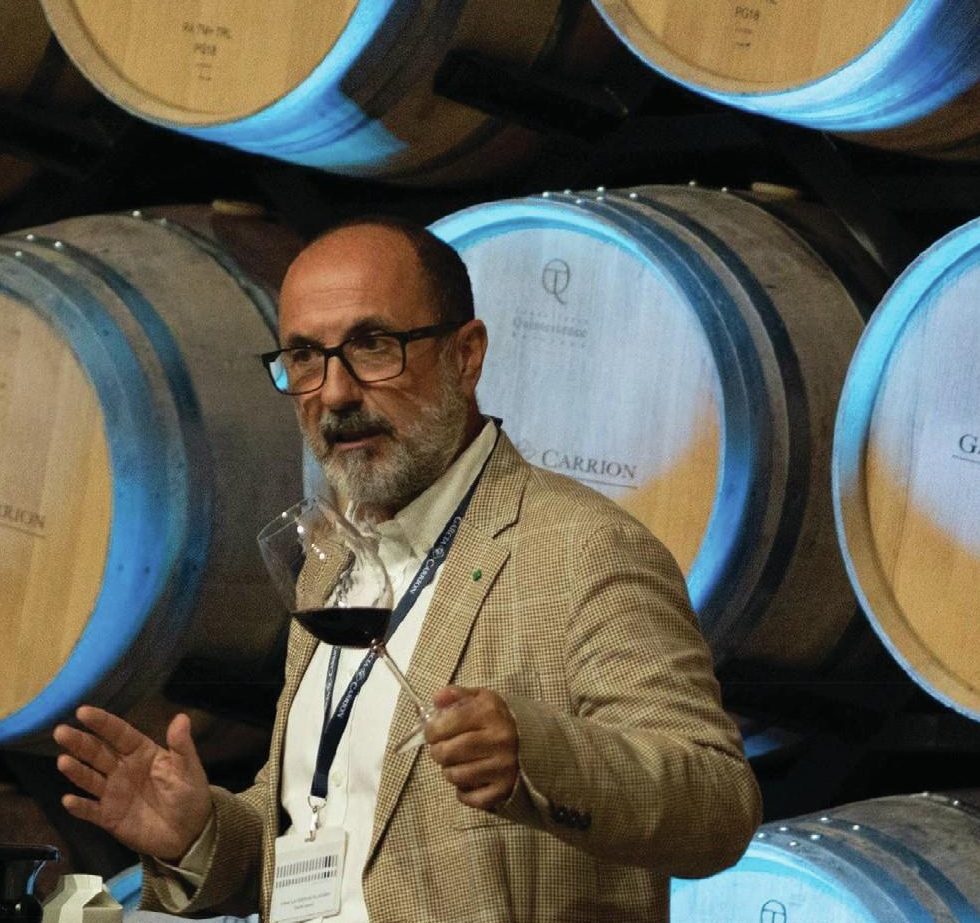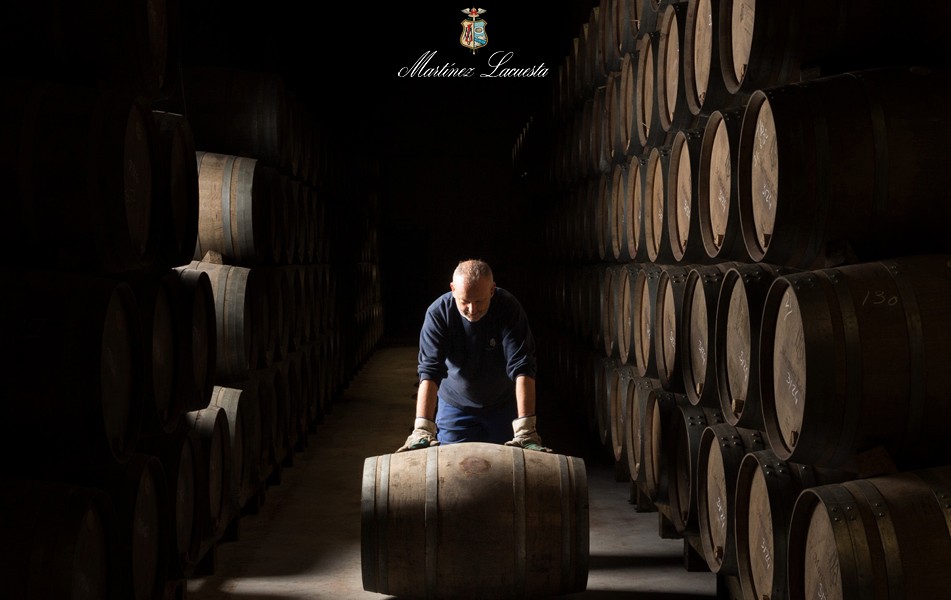Catalonia drought: irrigation, regeneration and classification
As Catalonia continues to wrangle with one of its worst droughts on record, Louis Thomas discovers how the Spanish region’s wine industry is attempting to work through this prolonged climatic disaster.

Agri-food is a major industry in the region, with 2021 figures from the Catalan Government revealing that it had a turnover of €43 billion, making it worth almost a fifth (19.7%) of Catalan GDP. Food and drink production is also a source of great pride for Catalonia, which has been named World Region of Gastronomy for 2025. But one of the necessities for this industry, water, has been in short supply.
Despite some recent episodes of heavy rainfall, the last few years have proven to be brutally dry for Catalonia’s agricultural sector. Things got so bad that the regional government even declared a state of emergency at the beginning of February, as water reserve levels fell below 16%.
Among the wine producers to have been hit by these harsh climatic conditions is Familia Torres. One of the most important names in Spanish viticulture, the family-run producer works over approximately 1,300 hectares across the country, but DO Penedès is very much where its operations are centred.
“The Penedès has traditionally been a dry farming area, with rain as the sole water source for viticulture,” explained Mireia Torres, director of innovation and knowledge. “In our region, heavy rains tend to occur during the spring and autumn due to storms coming from the Mediterranean, since those coming from inland arrive weakened. Unfortunately, in recent years, these precipitations from the Mediterranean have not occurred, leading us to this extreme drought.”
It is a worsening situation.
“The current drought period began in 2021,” Torres shared. “This is the most extreme drought since historical records have been kept. Since then, every year it has rained less and less. The average historical rainfall in Penedès is 544 millimetres. 2020 was a rainy year with 640 mm (mainly concentrated during spring), but then the drought started: 417 mm in 2021, 373 mm in 2022 and 246 mm in 2023.”
“Penedès is one of the most affected areas in Catalonia,” she continued. “In 2023, annual rainfall in the region was 54% lower than the historical average, and 34% lower than the year before. This has caused a decrease in production and vigour of the vines, but what’s really worrying is that we are starting to see some plants that can’t cope with the lack of water and die.”
“It’s clear that drought and high temperatures have an influence on the chemical composition of musts,” she said. “Sugar concentration, alcoholic potential and acidity are the most obvious effects, but also polyphenol ripening, colour and aromas can be affected.”
“Fortunately,” Torres continued, “we have vineyard management and winemaking strategies that can help us moderate these changes, such as advancing the time of harvest and night harvesting, planting varieties and rootstocks more adapted to climate change, or modulating certain physical aspects of winemaking such as skin maceration or fermentation temperature, among others. These last years, we have used these resources, to a greater or lesser extent, to preserve the organoleptic characteristics of our wines.”
Water worries
Given the scale of the problem, there has been some government support for growers, but Torres slammed the funds as “insufficient”, noting that they “do not cover the damage and are not agile enough”. She also called it “essential to agree on measures to facilitate the application of irrigation”.
“Although many appellations of origin have traditionally forbidden or restricted the use of irrigation, they are currently revising their regulations to be more flexible on this matter,” she said. “Regarding water origin, there is an important network of reservoirs in our region that collect melting water from the Pyrenees; this is the main source of water for agriculture, industry and human consumption. At Familia Torres, we also have ponds to accumulate well water and rainwater, this collected water help us cover part of our needs.”
View this post on Instagram
Another part of the solution is to bolster the soil’s ability to hold onto what water there is.
Partner Content
Torres shared that the company has been pursuing an “ambitious agricultural plan” since 2020 that is giving its vines greater resilience: “Our regenerative approach aims to turn vineyards into natural ecosystems, slowing erosion, promoting biodiversity and saving water as well. Among the main viticultural practices, we would highlight the implementation of cover crops, which increase water infiltration and reduce the loss for evaporation by reducing soil temperature; and the exclusive fertilisation with organic products such as compost with the objective to increase the organic matter on the soil. Living soils are able to retain more water and reduce the infiltration speed.”
According to Torres’ data, these measures can make a colossal difference, with a 1% increase in the organic matter content of the soil giving it the ability to retain a staggering 240,000 more litres of water per hectare, per year.
As for the vines themselves, Torres revealed that more drought-tolerant rootstocks and clones are being trialled, but one big change that the producer has made concerns its vine training: “It has been proven that gobelet reduces the exposure of the vegetation and grapes to the sun, which has a positive impact on reducing water consumption.”
Gobelet training, also known as ‘en vaso’ in Spain, is a form of head training that leaves the vine resembling a cup, or goblet.
“Also, our next plantings on sloped terrain will use the Keyline system – vines will follow contour lines to better distribute the rainwater and prevent it from being lost and causing soil erosion.”
In the winery, Familia Torres has also made efforts to cut its water consumption: “We built a water regeneration plant in 2016 close to our main winery in Penedès. We are currently reusing 45% of treated water. We mainly reuse this water for use in garden irrigation (now prohibited due to restrictions decreed by the government), for winery cleaning and cooling processes. I think it’s important to mention that since 2016, water-saving initiatives have reduced the winery’s overall water consumption by 18%.”
Sparkling shift
For one titan of the industry, the drought’s damage to yields has prompted it to take dramatic action.
Vanessa Lehmann, head of communications for sparkling wine powerhouse Freixenet, said: “The Cava wine harvest has been declining sharply by over 45% (in Catalonia alone, depending on the area). With this grape scarcity the industry faces a gap of 80 million of bottles just in 2024 and it is impossible to meet the global customer demand that is rising steadily.”
This “gap” has prompted Freixenet to release a new, premium sparkling wine range in DACH (Germany, Austria, and Switzerland) markets – but it is not classified as a Cava.
“The new range is a Cuvée de España using varieties such as Macabeo – one of the grape varieties that characterise Cava – and Chardonnay. Following our overall high-quality approach, we use a selection of the best wines after a strict control of several wines coming from different wineries from Spain.”
Despite it plugging the space left by Cava, the new wines are not exactly an imitation – one key difference is that they have been produced with the Charmat/Martinotti method (as is used for Prosecco), rather than the traditional method (for Champagne or Cava).
“Facing the grape scarcity due to the drought and the fact that possible measures to counteract the shortage of grapes are still being developed by the DO Cava and are not yet in place, we still want to meet consumer expectations and demand short- and midterm,” Lehmann revealed. “As DO Cava regulations don’t allow the production of non-Cava including traditional method sparkling wine in the same production site (premises) where the elaboration of DO Cava takes place, we decided to launch a Freixenet Premium Sparkling Wine for the DACH market using the Charmat Method while focusing on the typical Spanish taste experience and our high-quality standards.”
She also shared that it will be “priced similarly” to Freixenet’s Cava.
As for whether this is a long-term option for Freixenet, or just a short-term fix, Lehmann warned that the climatic crisis in Catalonia is not improving: “Initial projections show that the supply situation within the DO Cava will remain tense for the time being, as a weak harvest is expected again this year. Along with other Cava makers, worker unions and grape growers, Freixenet has been urging the Consejo Regulador del Cava to adapt the Cava regulations, as several DO’s in other regions have done and implement further possible measures.”
In spite of the challenges Cava producers have faced, the consejo recently announced “record high” sales figures, with in excess of 250 million bottles sold last year.
Related news
All the medallists from The Rioja Masters 2025




